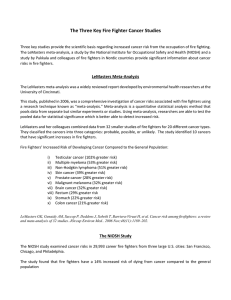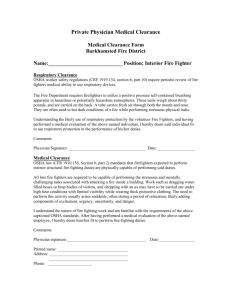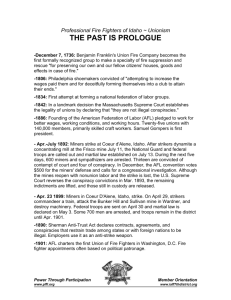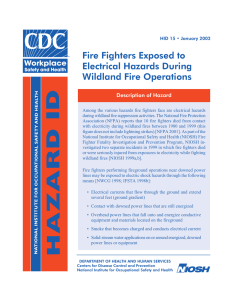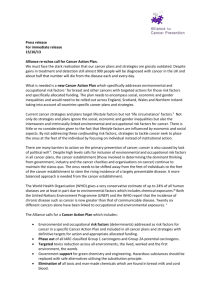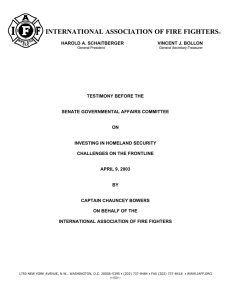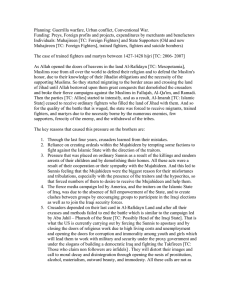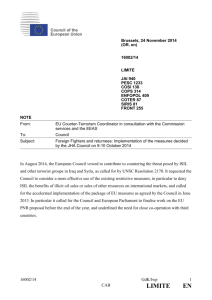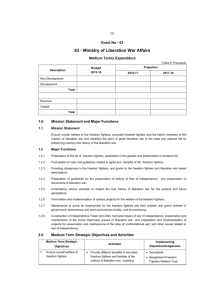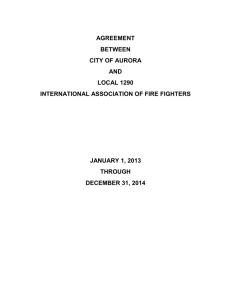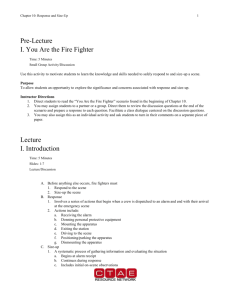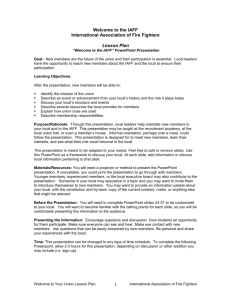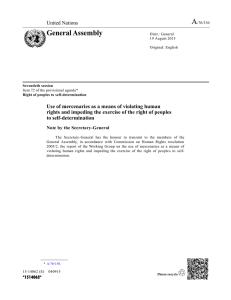NIOSH Report Relating Cancer and Firefighters
advertisement
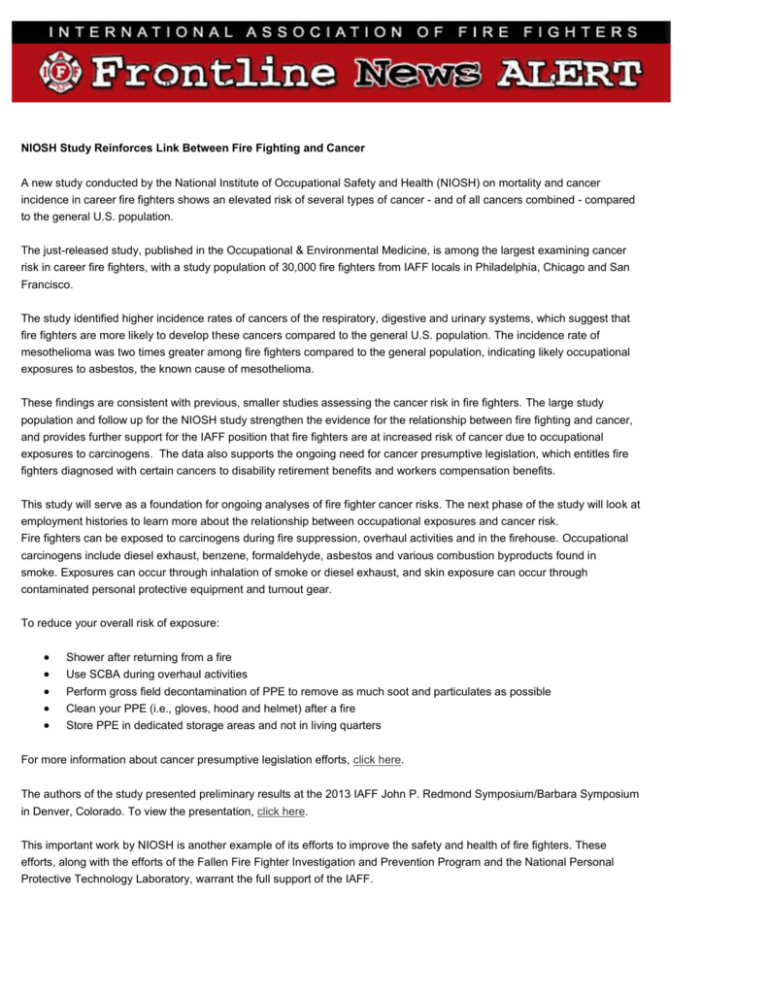
NIOSH Study Reinforces Link Between Fire Fighting and Cancer A new study conducted by the National Institute of Occupational Safety and Health (NIOSH) on mortality and cancer incidence in career fire fighters shows an elevated risk of several types of cancer - and of all cancers combined - compared to the general U.S. population. The just-released study, published in the Occupational & Environmental Medicine, is among the largest examining cancer risk in career fire fighters, with a study population of 30,000 fire fighters from IAFF locals in Philadelphia, Chicago and San Francisco. The study identified higher incidence rates of cancers of the respiratory, digestive and urinary systems, which suggest that fire fighters are more likely to develop these cancers compared to the general U.S. population. The incidence rate of mesothelioma was two times greater among fire fighters compared to the general population, indicating likely occupational exposures to asbestos, the known cause of mesothelioma. These findings are consistent with previous, smaller studies assessing the cancer risk in fire fighters. The large study population and follow up for the NIOSH study strengthen the evidence for the relationship between fire fighting and cancer, and provides further support for the IAFF position that fire fighters are at increased risk of cancer due to occupational exposures to carcinogens. The data also supports the ongoing need for cancer presumptive legislation, which entitles fire fighters diagnosed with certain cancers to disability retirement benefits and workers compensation benefits. This study will serve as a foundation for ongoing analyses of fire fighter cancer risks. The next phase of the study will look at employment histories to learn more about the relationship between occupational exposures and cancer risk. Fire fighters can be exposed to carcinogens during fire suppression, overhaul activities and in the firehouse. Occupational carcinogens include diesel exhaust, benzene, formaldehyde, asbestos and various combustion byproducts found in smoke. Exposures can occur through inhalation of smoke or diesel exhaust, and skin exposure can occur through contaminated personal protective equipment and turnout gear. To reduce your overall risk of exposure: Shower after returning from a fire Use SCBA during overhaul activities Perform gross field decontamination of PPE to remove as much soot and particulates as possible Clean your PPE (i.e., gloves, hood and helmet) after a fire Store PPE in dedicated storage areas and not in living quarters For more information about cancer presumptive legislation efforts, click here. The authors of the study presented preliminary results at the 2013 IAFF John P. Redmond Symposium/Barbara Symposium in Denver, Colorado. To view the presentation, click here. This important work by NIOSH is another example of its efforts to improve the safety and health of fire fighters. These efforts, along with the efforts of the Fallen Fire Fighter Investigation and Prevention Program and the National Personal Protective Technology Laboratory, warrant the full support of the IAFF.

